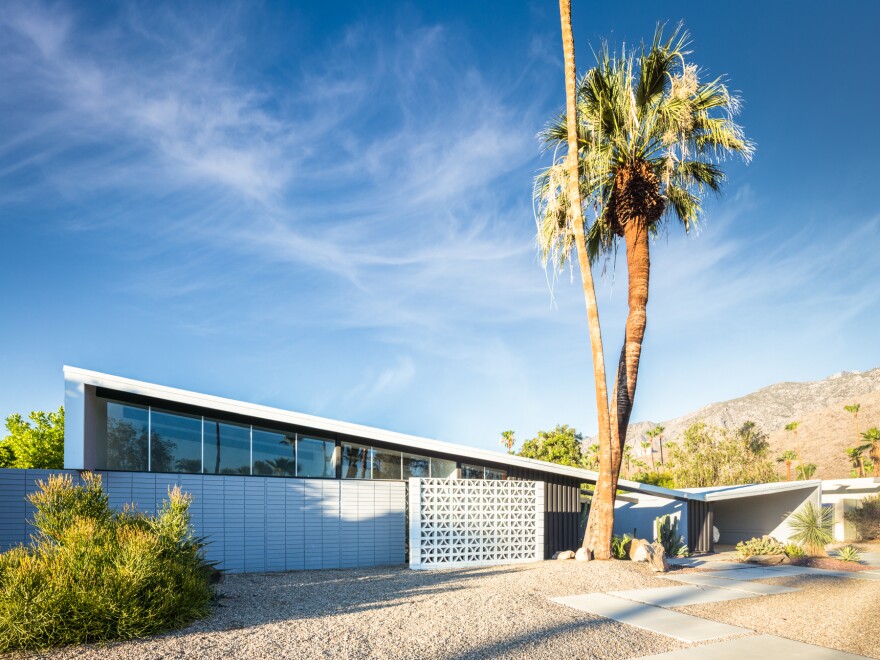William Krisel, a pioneering architect who brought his vision of modernism to Southern California tract housing, died Monday at age 92.
Tract housing often implies cookie-cutter. But in Palm Springs, Krisel varied homes' rooflines, paint schemes, and setbacks from the street so no two tract homes next to each other looked the same — despite all having one basic floorplan. He also popularized the "butterfly" roof.
His homes featured open floorplans and clerestory windows to bring in even more light.
"First of all, it makes you aware that it's a beautiful day or a dark day — you're aware of the weather because the outdoors comes in," Krisel told NPR last year. "Secondly, the space that you're in is not held in by four walls, that your space goes as far as your eye can see."
Krisel grew up in a big house with staff of servants in Shanghai, where his father was the sole film distributor to Asia for all of the big Hollywood studios. At 11, he drew a sketch of a proposed family home in Southern California; his father sent the drawings to the architect.
The architect told Krisel's father that the boy had talent and ought to become an architect — and that's just what he did after leaving the Army. He served during World War II and said he often chatted with his fellow soldiers about what they would do after the war.
"Everybody had an idea of what kind of a home they wanted and what not, and so I listened to all this and made up my mind that I was going to try and be a specialist in housing," he said.
He's best known for the 1,200 middle-class homes in California that he designed from 1957 to 1963, when he worked with the builder-developers George and Robert Alexander, according to the Los Angeles Times. The partnership revealed Krisel to be a pragmatic architect, attracting buyers with appealing architecture at a price that made the developers happy.
The Alexanders' "main interest was to make money," he said, according to the Times, "and my interest was to do good design. In order for them to do my work, I had to come up with a design that was less expensive than the dingbats they were building."

Krisel told NPR that in the late 1950s, buyers could purchase one of his small homes on "a 100 x 100 lot, all fenced in, landscaped, modern design, air condition, swimming pool — all for $29,900."
The Times notes that Krisel also was a talented artist, whose three-dimensional drawings also sold buyers on the appeal of a home in Palm Springs or elsewhere. Krisel himself wasn't sold on the desert life, though: "I wouldn't like to live there," he said, "but I like it as a locale for my architecture."
Krisel later designed residential buildings like high-rise apartments and condos, as well as commercial projects such as offices, shopping centers and hotels, according to the Getty Research Institute, which houses Krisel's archive.

The publication of a book about his work spurred a fresh wave of interest in Krisel homes last year; Palm Springs renamed a street after the architect in February 2016.
More than 40,000 homes are thought to have been built from his designs, according to the Getty.
"I've had a very happy and successful career," he told NPR. "And I've achieved what I set out to do: create housing for the masses that they could afford and that would change their way of living and make life more enjoyable."
Copyright 2021 NPR. To see more, visit https://www.npr.org.





